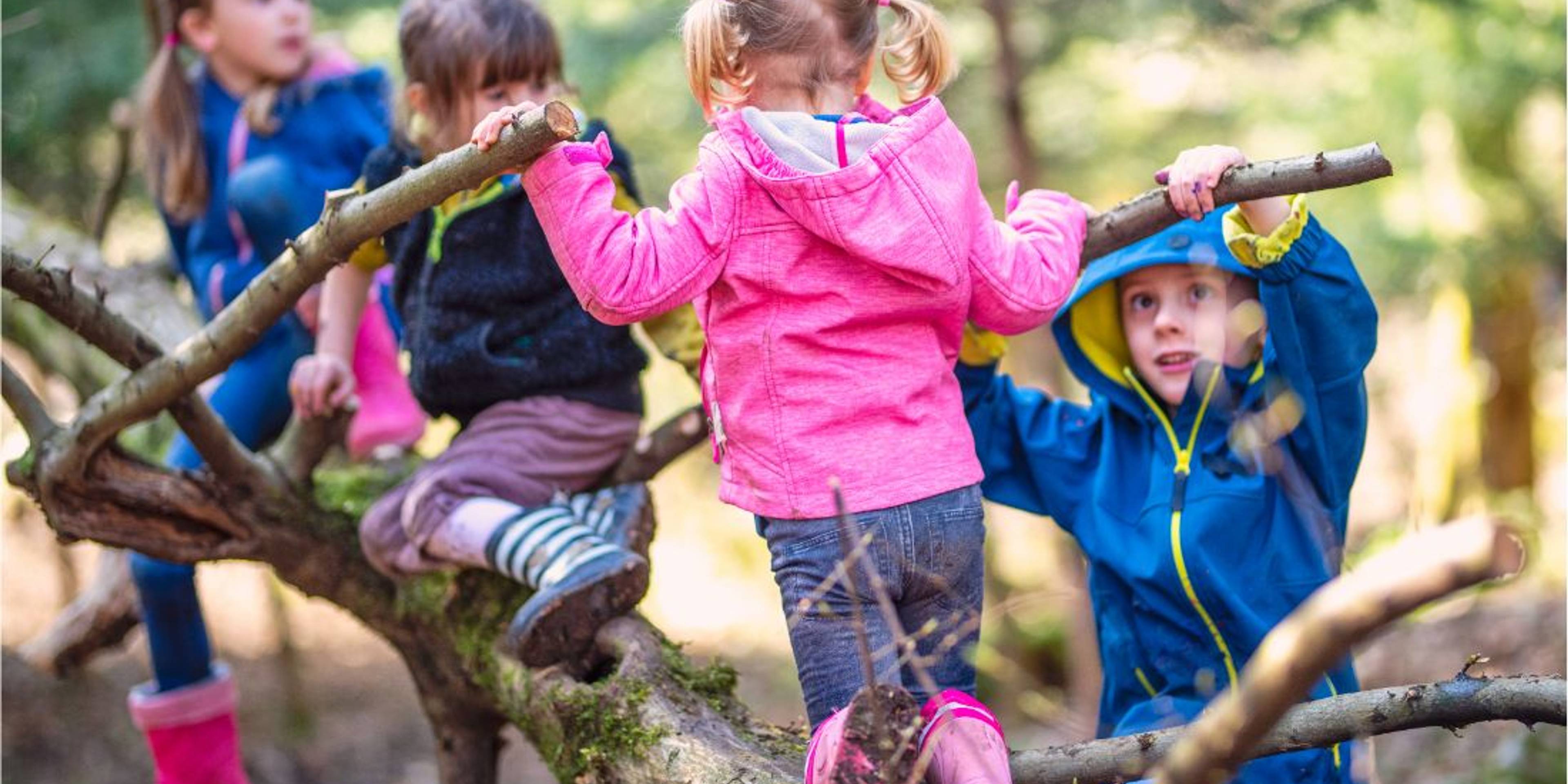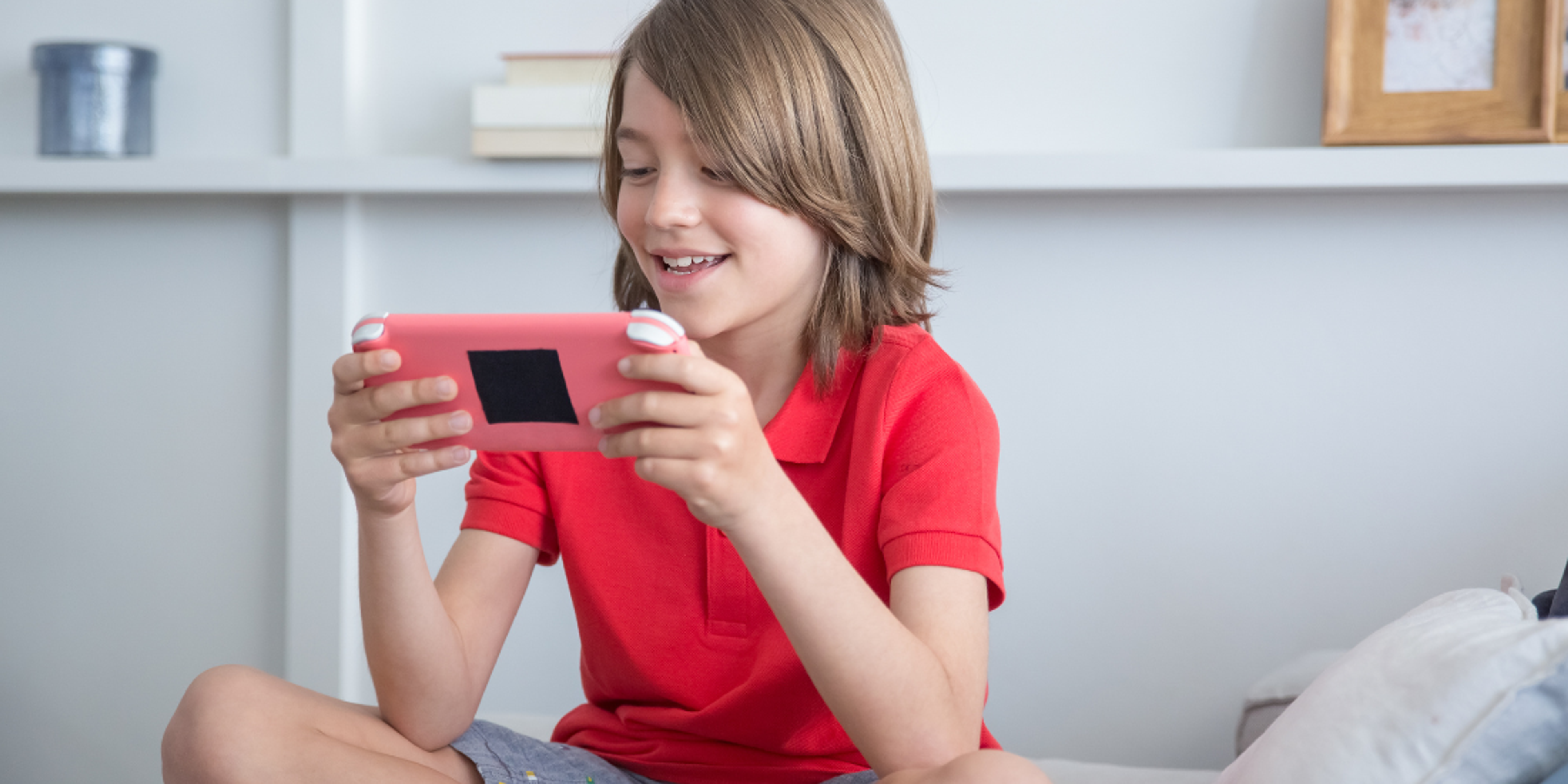April 18, 2023
Friendship interventions and teen mental health

Our Researcher of the Month, Tanya Manchanda, is a PhD student whose research focuses on understanding the impact of friendships on young people’s mental health outcomes. Friendships are vital throughout our lives, but particularly in the teen years. Studies have shown that if they are in crisis or feel depressed, teens are more likely to turn to their friends than trained professionals or other adults and that they tend to have a higher sense of comfort and trust around their close peers than with other people they know. Close adolescent friendships predict higher interpersonal happiness and are actually a protective factor for good mental health into adulthood. Strong friendships also appear to reduce the negative effects of peer victimisation.
In a newly published paper, Tanya and her co-authors review and synthesise existing literature on mental health interventions that involve teens’ authentic friends or social group, exploring their efficacy and the different roles they might play in supporting mental health outcomes. Given the indisputable support that friends provide to each other during adolescent development, Tanya found surprisingly few interventions that actively involve friends. Despite a comprehensive worldwide search, only 24 studies are included in her scoping review and only 18 in her systematic review. Whilst one of these interventions was Japanese, all others were developed and implemented in either Australia, the UK or the US. Within these interventions, three prominent themes emerged; mental health literacy, help-seeking and friendship-building.
This important new paper shows that, despite being a key source of informal support for teens, especially in times of crisis, currently, friends are rarely involved in mental health interventions. The few interventions that do exist show that well-considered friendship interventions have the potential to improve and protect adolescent mental health and can be implemented in a natural setting, using teens’ pre-existing social circle as a source of informal support.
Summary
Tanya’s review shows that a broad range of different interventions have been tried, from those seeking to improve general mental health literacy, to male-only interventions targeting the reduction of self-harm, and school-based interventions designed to prompt girls to seek help for friends with disordered eating habits. Some of the interventions, such as Mental Health First Aid and “Making the Link”, have been well studied with consistent positive findings. The majority of others are novel in their implementation as adolescent friendship interventions.
Most existing interventions which harness teens’ authentic social groups are not designed primarily to develop friendships. Instead, in the main, they aim to improve mental health literacy, to better equip adolescents to support themselves and their friends. The results are promising. Many of the studies reported changes or increases in help-seeking attitudes towards friends, along with greater confidence in supporting a friend in emotional distress or experiencing a mental health illness. A common outcome was that teens would encourage friends to seek mental health support from an adult or a professional, such as a psychologist or counsellor. The studies mainly focused on the friends being trained and their outcomes, rather than outcomes for the recipients of their support.
One particularly interesting intervention (Kognito Face2Face) incorporated the use of simulations and virtual peers. These were used to train adolescents in supporting friends with a mental illness or in times of emotional distress, with the aim of suicide prevention. Participating teens were placed in a simulated college environment and asked to interact with virtual peers who might be at risk and make decisions on whether or not they required a professional referral. It was successful in eliciting supportive responses from participants.
A few studies included in the review did aim primarily to combat social isolation and build friendships. These were most frequently implemented in a university context. In one example, an incoming cohort of undergraduate engineering students was allocated to a social support group during a university induction, where they completed activities designed to strengthen friendship ties. The results showed that, although these students made friendships through which they sought emotional support in the short-term, these had diminished by the one-year follow-up. The authors of the paper hypothesised that, whilst students now had different friends, the intervention provided them with a temporary social network which eased their transition to university. Another study (Groups for Health) in Australia targeted undergraduate students who had screened positive for psychological distress and social isolation. This intervention tried to increase social connectedness and group identity formation in an effort to help participants build friendships to combat feelings of isolation and distress. It was found to improve mental health, wellbeing and social connectedness, both immediately after the intervention and at a six monthly follow-up.
Long-term effects of the interventions on mental health and wellbeing were not assessed in the studies reviewed. However, all of the included studies reported some positive effects, especially immediately after the intervention.
Implications
Implications for schools
It’s important to note that mental health interventions involving teens’ authentic friendship groups are few and far between, little is currently known about this important potential area and, because many of the interventions are ‘one offs’, it is hard to fully evaluate their success. However, Tanya’s review and analysis of existing studies is a must read for any school looking to develop or implement friendship interventions.
Those that yielded positive results tended to have an aspect of interactivity. Role-playing, showing vignettes or providing teens with hypothetical examples of different scenarios seem to be effective methods when training teens in mental health literacy. School staff should carefully consider what kind of intervention might best fit their setting, who will deliver any intervention and whether they have had appropriate training, whether or not interventions are evidence-based and what they are trying to achieve.
In general, remember that friendships are vital for healthy adolescent development. Teachers can look out for students who are isolated and nudge them to connect with others (perhaps by partnering them up with others in the classroom environment). Helping teens to foster close social bonds is important.
Implications for parents
Model an appreciation of friendships in family life. Ask teens about their friendships, find out what is going well and show interest if something isn’t! Get to know about their social circle. Nudge them to evaluate who they could turn to if they needed support. Remind teens of the agency they have in supporting their friends and just how important this role can be.

Tanya Manchanda
PhD student in the Department of Psychiatry at the University of Oxford.
Tanya Manchanda is a PhD student in the Department of Psychiatry at the University of Oxford. She brings with her a wealth of academic experience, having earned an M.Ed. from Harvard University and a B.Sc. (Hons) from the University of Toronto. Her research is centred around adolescent development, the social brain, and mental health, with a particular focus on understanding the impact of friendships on young people’s mental health outcomes. Tanya is currently working on investigating school-based intervention programs that aim to improve mental health outcomes for adolescents with the involvement of their authentic social group.
Tanya Manchanda
PhD student in the Department of Psychiatry at the University of Oxford.
Scroll our research gallery

Jun 17, 2025
Navigating the feed: younger adolescents' reflections on algorithmically curated social media
Our latest researcher of the month, Roxana Pomplun, has investigated the interactions, experiences and perceptions of younger adolescents, aged 11, 12, and 13, with algorithmically curated platforms such as TikTok, YouTube Shorts, Spotlight on Snapchat and Reels on Instagram. These kinds of platforms use algorithms to personalise and tailor feeds, harnessing user data to suggest content that the individual is most likely to be interested in and engage with. As such, young people have little control over what they are seeing in their feeds. Tech companies are not yet required to be transparent about the data that they are collecting, but it tends to include demographic information such as age, gender or location, along with use patterns. Whilst these sites dominate the digital lives of tweens and teens, until now they have received little dedicated research attention, particularly in relation to younger users, with most existing studies focusing on older teens. Whilst we know that most social media platforms have age limits of 13, we also know that many younger children are active users, particularly of algorithmically curated platforms like TikTok and YouTube Shorts. Given that early adolescence is a life phase marked by critical neurological development, identity development and heightened susceptibility to mental health issues, deepening our understanding of how younger adolescents engage with social media is vital. Roxana's qualitative research, where a group of young people eloquently explore their own experiences and perceptions, broadens our knowledge of social media use within an age group that appears increasingly aware of the digital influences shaping their online experiences, yet which is still in need of support to fully navigate these ecosystems.

May 15, 2025
Looking beyond smartphone bans
Over the last year or so, there has been a surge in public concern around smartphones and social media. Banning or restricting children’s access to smartphones and social media has grasped the attention of policy makers, schools and parents. A number of countries, including France, Turkey, Norway, Sweden, and regions of the US and Canada have introduced laws, policies or guidance for schools to ‘ban’ or heavily restrict the use of phones. In the UK, there are proposals to raise the age of ‘internet adulthood’ from 13 to 16, and to ban smartphones in schools. The third reading of a private members’ bill on this topic will be heard in parliament in July. Whilst these bans aim to protect children from harm, recent studies highlight a lack of evidence on their efficacy. Along with a team of international experts, our latest Researcher of the Month, Dr Victoria Goodyear, argues that, in isolation, banning smartphone and social media access fails to equip children for healthy use of technology. She suggests that there is a need to shift debates, policies and practices away from a sole focus on restricting smartphone and social media access, toward an emphasis on nurturing children’s digital skills for healthy technology use, and a rights-respecting approach which is underpinned by age-appropriate design and education.

Apr 22, 2025
Encouraging adventurous play in the preschool years
Tune into our podcast interview with April's researchers of the month here. As well as providing numerous opportunities for exploration, joy, and expression, outdoor and adventurous play - the type of play that allows children to take age-appropriate risks - is associated with a range of positive health behaviours and outcomes. Yes, we're talking about the kind of play that might leave us adults with our hearts in our mouths at times, as children start to disappear up a tree, or engage in a rough and tumble game of chase. But its benefits are wide-ranging and known impacts include increased levels of habitual physical activity alongside better mental health and positive mood. In 2019, Dr Hesketh was involved in the creation of physical activity guidelines in the UK, which explicitly note the importance of outdoor play for children in the preschool age group. We know quite a lot about the play habits of school-aged children, but until now, have had significantly less data on their younger counterparts. Our Researchers of the Month, Dr Kathryn Hesketh and Professor Helen Dodd set out to discover how much time preschool-aged children spend playing in a range of indoor and outdoor spaces, and how adventurously they are playing within them. In the first national survey of play in children of this age, they asked over 1000 parents of two to four year olds about their children’s play habits, finding that, on average, children aged two to four spend around four hours per day (outside of educational settings) playing. Just under 50% of this was spent playing outdoors. Their findings shed interesting light on some inequalities in play, even in the youngest age group, which may exacerbate existing inequalities in health.

Mar 17, 2025
Fostering a school culture against bullying: the KiVa Programme
Bullying is an extremely important public mental health risk. Around one in five primary school children report being bullied at least weekly. Children who are bullied are more likely to experience depression and anxiety, and are at heightened risk of mental health issues in adolescence and adulthood. Whilst schools in England and Wales are required to have anti-bullying policies, rates of bullying remain high. Bullying is preventable, but schools need more help to tackle it. Typically, school policies focus on how to handle bullying once it happens. However, evidence suggests that a comprehensive approach involving the entire school to prevent bullying, alongside clear strategies for addressing confirmed cases, is the most effective way to tackle the issue. KiVa is one such whole-school approach, developed in Finland by Professor Christina Samivalli. A large study in Finland which involved 28,000 primary school pupils found that adopting the KiVa programme in Finnish schools significantly reduced bullying and improved children's mental wellbeing. The programme has since been rolled out nationally by the Finnish government and ongoing use of KiVa in Finnish schools is associated with year-on-year incremental reductions in bullying. Along with colleagues, our researcher of the month, Professor Judy Hutchings OBE, has tested the effectiveness of the KiVa Programme in UK primary schools. The study involved over 11,000 children in Wales, Birmingham, Oxfordshire and Devon, and showed a 13% reduction in reported rates of bullying when compared with existing school approaches to tackle bullying.

Feb 12, 2025
When is the right age? Searching for age-appropriate ways to support children's online lives
Currently, children's and young people’s use of digital technology is rarely out of the news. Age limits are debated. Calls for stronger limits are made, and questions are raised regarding whether society should ban 'under-age' children from various aspects of the digital world. 13 years of age is often cited as a digital 'age of consent', though this varies in some countries. Commonly used age limits are largely arbitrary, based primarily on US legislation, rather than evidence. In a recent paper, our researcher of the month, Dr Kim Sylwander, and her co-author Professor Sonia Livingstone, consider age milestones and evaluate whether or not the evidence supports them. Are age limits the optimal way to regulate children’s digital experiences? Does it matter that they are widely contested and often poorly implemented? And are common boundaries even the “right” age, according to evidence from the field of children and digital media? Dr Sylwander persuasively argues that moving forward, a developmental approach can better support children’s rights.

Jan 14, 2025
Showing faith and trust in children nurtures integrity
A new study which explores the development of trust and integrity in children has found that expressing trust in young children encourages them to behave honesty. The research team, including our researcher of the month, Professor Li Zhao, studied whether children were less likely to cheat in a simple test of counting accuracy if the adult administering the test had previously conveyed trust in them. They found that children who were trusted cheated less than those who were not trusted. These findings provide novel evidence about the causal effect of trust on the development of children's honesty.

Dec 17, 2024
Intrinsic reward and word learning
From infancy onwards, humans display an innate motivation to acquire language and to communicate. We start acquiring words as babies and continue to do so throughout our lives. In fact, children are thought to learn over 3000 new words each year. However, relatively little work has focused on why we are motivated to learn words, particularly when it comes to adolescents. Adolescence is a period of great neurological change and sensitivity to learning. It's also marked by changes in reading behaviours. Whilst children become skilled readers between the ages of 10 and 18, this period is also associated with motivational changes in reading, with teens frequently showing a disinclination to read for pleasure. This change often coincides with the transition from primary to secondary school. Policy makers are keen to motivate adolescents to read for pleasure, arguing that it would improve not just literacy outcomes, but also result in substantial economic and societal benefit. Recent research has shown that adults find learning words to be intrinsically rewarding, and that this intrinsic reward facilitates the entrance of new words into long-term memory. In their latest paper, our researchers of the month, Professor Saloni Krishnan and Professor Pablo Ripollés, set out to establish whether the same is true for children and teens.

Nov 14, 2024
Delivering effective menstrual education
Research has shown that menstruation and menstrual cycle symptoms can be disruptive and detrimental to physical, mental and social wellbeing. As many as 93% of teen girls experience dysmenorrhea (severe cramps) and girls with a typical cycle experience 11 menstrual cycle-related symptoms on average, potentially including mood changes, stomach cramps and increased levels of anxiety and fatigue. Adolescents with problematic symptoms have reported a negative impact on school attendance, behaviour, confidence around peers and participation in physical activity. In the United Kingdom, evidence suggests that menstrual health education delivered by teachers generally focuses on menstrual cycle biology, as opposed to management of menstruation and menstrual cycle related symptoms. Our latest researcher of the month, Dr Natalie Brown, set out to understand young people’s perceptions of menstrual education in schools and their experiences of menstruating whilst at school, including within physical education. Her study involved nine focus groups with 10-15 year old female pupils attending primary and secondary schools across England and Wales. Pupils highlighted that, in their experience, menstrual education is limited and noted that the menstrual cycle impacts negatively on their school experience, affecting participation in sport and school attendance generally. Participants highlighted a need for more support and information regarding understanding and managing periods in school.

Oct 17, 2024
How influential is social media on young people's mental health?
A significant body of evidence tells us that young people's mental health has decreased over time, and a potential link between social media use and this mental health decline has triggered wide interest and concern. Research into social media use and mental health is being conducted at a rapid pace but, so far, findings are far from conclusive. Our new Researcher of the Month, Dr Margarita Panayiotou, adds to this body of work. She led a team of researchers who recently published a study involving thousands of young people in the UK. It set out to explore the interplay between social media use and teens' mental health, wellbeing and social life, and found that when considering the complex combination of multiple factors, things such as a lack of family support are arguably more important for adolescent mental health than social media use.

Sep 16, 2024
How do young children’s relationships with parents and teachers impact their adjustment to school?
We already know that children's relationships with their parents and teachers contribute to their school adjustment and achievement, and that positive, close relationships with adults are really important for a wide variety of children’s outcomes. However, few studies have examined interactions between these relationships or sought to address the nuances of children’s experiences in terms of how different relationships have different impact or influence. To address this, along with colleagues, our new Researcher of the Month, Dr Caoimhe Dempsey, has recently published an article which aims to examine the links between children's relationships with their mothers, fathers and teachers, and three domains of school adjustment: academic achievement, academic self-concept and behavioural adjustment in the classroom. By examining a range of data, the researchers sought to find out whether some children are more susceptible to the effects of the quality of their relationship with their teacher.

